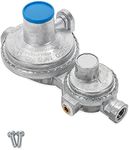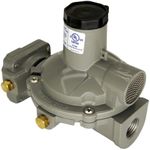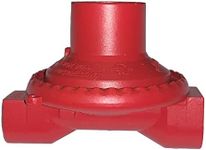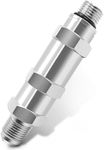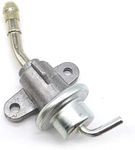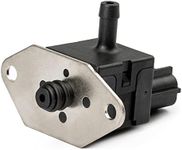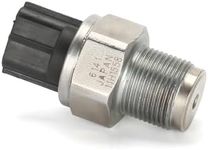Buying Guide for the Best Propane Regulator
Choosing the right propane regulator is crucial for ensuring the safe and efficient operation of your propane-powered appliances. A propane regulator controls the flow of gas from the propane tank to the appliance, maintaining a consistent pressure. When selecting a propane regulator, it's important to consider several key specifications to ensure it meets your needs and the requirements of your appliances.Type of RegulatorThere are different types of propane regulators, including single-stage, two-stage, and automatic changeover regulators. Single-stage regulators are suitable for applications where the distance between the tank and the appliance is short. Two-stage regulators are better for longer distances and provide more consistent pressure. Automatic changeover regulators are used with dual-tank systems to switch from an empty tank to a full one automatically. Choose the type based on your setup and the distance between your tank and appliances.
BTU CapacityBTU (British Thermal Unit) capacity indicates the amount of gas the regulator can handle. This is important because it ensures that your appliances receive the right amount of gas to operate efficiently. Regulators come with different BTU ratings, typically ranging from 200,000 to over 1,000,000 BTUs. To choose the right one, add up the BTU requirements of all your propane appliances and select a regulator that can handle at least that total.
Outlet PressureOutlet pressure is the pressure at which the gas is delivered to your appliances. Common outlet pressures are measured in inches of water column (WC), with 11 inches WC being standard for most residential appliances. Higher pressures may be needed for industrial applications. Ensure the regulator you choose matches the pressure requirements of your appliances to avoid performance issues.
Inlet Connection TypeThe inlet connection type refers to how the regulator connects to the propane tank. Common types include POL, ACME, and Type 1 (QCC1) connections. POL connections are older and require a wrench to tighten, while ACME and Type 1 connections are more user-friendly and can be hand-tightened. Choose a regulator with an inlet connection type that matches your propane tank's valve.
Material and DurabilityPropane regulators are made from various materials, including aluminum, brass, and stainless steel. The material affects the regulator's durability and resistance to corrosion. For outdoor use or in harsh environments, a regulator made from stainless steel or brass is recommended due to their higher resistance to weather and corrosion. Consider the environment in which the regulator will be used to choose the most durable option.
Safety FeaturesSafety features in propane regulators can include excess flow protection, thermal protection, and built-in pressure relief valves. These features help prevent gas leaks and potential hazards. Excess flow protection shuts off the gas flow if a significant leak is detected, while thermal protection stops gas flow if the regulator gets too hot. Pressure relief valves release excess pressure to prevent regulator damage. Opt for a regulator with these safety features for added peace of mind.



